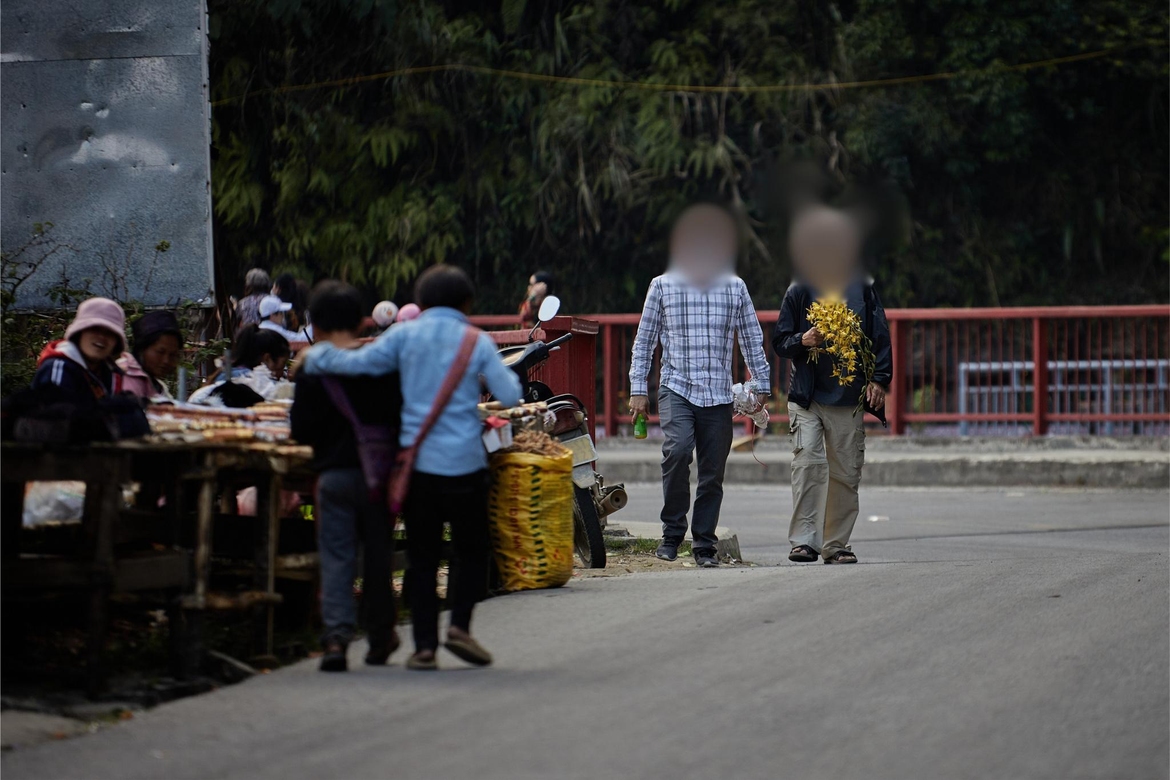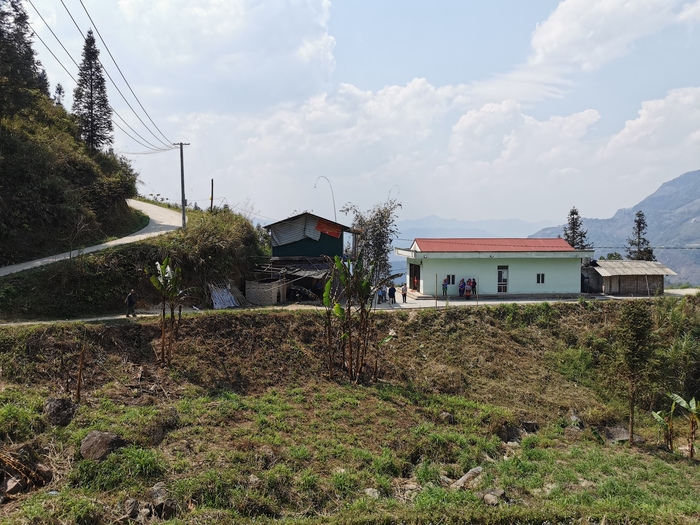Neighbours Sharing Faith in the Heart of Vietnam
They would rather not have missionaries from outside as long as they can do it themselves: Witness to the people in the neighboring village.

Pastor Steve and a co-worker. Stefanus Alliance supports Pastor Steve's work to spread the Gospel and train pastors and leaders for churches among minority peoples in South-East Asia.
Article by Jostein Ørum. Photo by Stefanusalliansen. Originally published in Magasinet Stefanus #6 2023.
Come along on a remarkable journey to a quaint village, nestled amidst the lush landscapes of Vietnam. To reach this hidden gem, embark on a ten-hour drive from the bustling capital city of Hanoi, navigating rugged terrain and winding roads. As the sun sets, turn onto a narrow path that winds through mist-covered mountains, descending into a serene valley. The air is thick with anticipation as you traverse green hillsides, passing by freshly harvested rice terraces.
As you approach the village, the signs of human habitation become more pronounced. The village emerges through the foliage, its buildings scattered across the landscape. Rice fields stretch out in every direction, and the surrounding forest adds an air of mystery. It’s a place where time seems to slow down, and the rhythms of nature dictate daily life.
The Nung people inhabit the area we pass through. Along the road, Nung women dressed in somber black suits go about their daily tasks. Crossing the invisible boundary between villages, we notice subtle shifts—the road deteriorates, and our moped slows. But it’s not just the physical surroundings that change; the women ahead of us wear vibrant colors—blue, green, red, and pink—contrasting with the black-clad figures we left behind.
Language, too, transforms as we enter the village. Here, the Hmong people reside, their unique culture woven into the fabric of the landscape. This is home to the Hmong people.
Surveillance and Detention
Vietnam is made up of 54 ethnic groups, including the Hmong and Nung. The Hmong make up about 1.4 million of the country's population. The Hmong are also spread across borders in South and East Asia. In 1986, the first Vietnamese Hmong became Christians, and today it is estimated that 350,000 of them are Christians.
We park where the road ends. 14 men in civilian clothes, which could be the dress code anywhere in the world, and 13 women, most of them very young, dressed in colorful Hmong costumes, are lined up outside their church as we arrive. Many of the women are carrying babies in their arms or on their backs. They have lined up to greet Pastor Steve, the “church father.”
The little man is called Reverend Steve in the West when he is referred to in public. For half a century, he has lived with interrogation, surveillance, and imprisonment. The smiling people of this area know him by his real name. In recent decades, he has built a network of churches in Vietnam that includes more than 1,200 congregations.
Building their own church
The church in this village is new and painted white, solid and simple. It is a community effort. The congregation consists of 13 families - that's how the membership is listed here. In this case, that is 75 people. Each of the families contributed 5,000,000 dong from their own pockets to build the church. The sum is not as large as it may sound, but 200 dollars is still a lot of money for the 13 families. They made the sturdy, dark brown pews on which we sit, as well as the tables and the pulpit. The families went to the forest together and came back with enough wood to build a church. The rest of what they needed to build a cathedral of cement and corrugated iron was given to them by friends. Or perhaps more accurately, friends of Pastor Steve.
They used to have simple buildings to meet in, but now they have a house that is a church. It's been over 20 years since the first man in the village became a Christian. He's sitting across from me now, on the other side of the homemade table, and he's a generation older than the other men in the room. It was the radio broadcasts that handed him the stories about Jesus - the ones that exploded his preconceptions.
The consequences of faith
When I ask what has changed here since the man across from me became a Christian in 1991, the answer is remarkably similar to what I have heard elsewhere in recent days: The men stopped drinking, they went from being unable to provide for their families to being able, from being irresponsible to being responsible. They are no longer gambling away the money that should be supporting the family. This has been such a profound change that one family after another has been changed and has accepted the Christian faith. It is simply the impact of the Gospel in their lives that is convincing their neighbors. One Hmong woman said: "A great God changed my husband. It must be real.”
The men stopped drinking, they went from not being able to take care of their families to being able to.
The old man in front of me, the first Christian, sits quietly and watches everything. What did he risk? It's not that believing in Jesus is illegal in Vietnam, it's just that it makes you a traitor. You break with the village tradition and collective father worship, you become the weak link that exposes the local community to the wrath and curse of the ancestors. Although Vietnam is officially a communist, and therefore atheist, country, Vietnam is very religious. The punishment for breaking with the community can be the destruction of your crops or the confiscation of your buffalo by the local authorities. So the old man in front of me risked his livelihood, his social position, and his community.
Women Can't Lead
Now his son is the pastor of the small church, trained at one of Pastor Steve's Bible schools. Everyone is gathered in the church room, sitting on the brown pews, those who are not allowed to walk around with newborns. Among the Hmong people, women are not allowed to be leaders in the churches or in any other area. Among other ethnic groups in Vietnam it can happen, but not here. Still, sometimes the women get into the conversation and tell me something I don't understand because it's not translated.
The room we are sitting in has some features in common with every other church room I visit in Vietnam: the simple, functional shape, corrugated iron on the ceiling, a cross at the front of the church, plastic Christmas trees somewhere behind the lectern, and twinkling lights. And Christmas is still many months away. The difference here is that the furniture is not plastic.
The Dream for the Neighboring Village
We leave the church. The men follow me out the back, onto the newly harvested rice field, toward the valley and the open landscape. We are 1600 meters above sea level, the landscape is open, the view is wide, and I ask where the boundaries of the village are. My new friends point in different directions and seem to draw some invisible boundaries that aren't necessarily logical. Then they point to the small village we passed through to get here, where the Nungs live. The Nungs are close to the heart of this church: One day, they pray, the neighboring village will experience the transforming power of God that they have experienced. They know they have to reach the Nungs themselves. This is how the church grows in Vietnam: One family reaches out to another family. One village carries the story of Jesus to the next. One people group reaches out to another. They would rather not have missionaries from outside as long as they can do it themselves.
The 13 families in this village have a dream, and that dream is the neighboring village.

The white-painted church was built by the community.